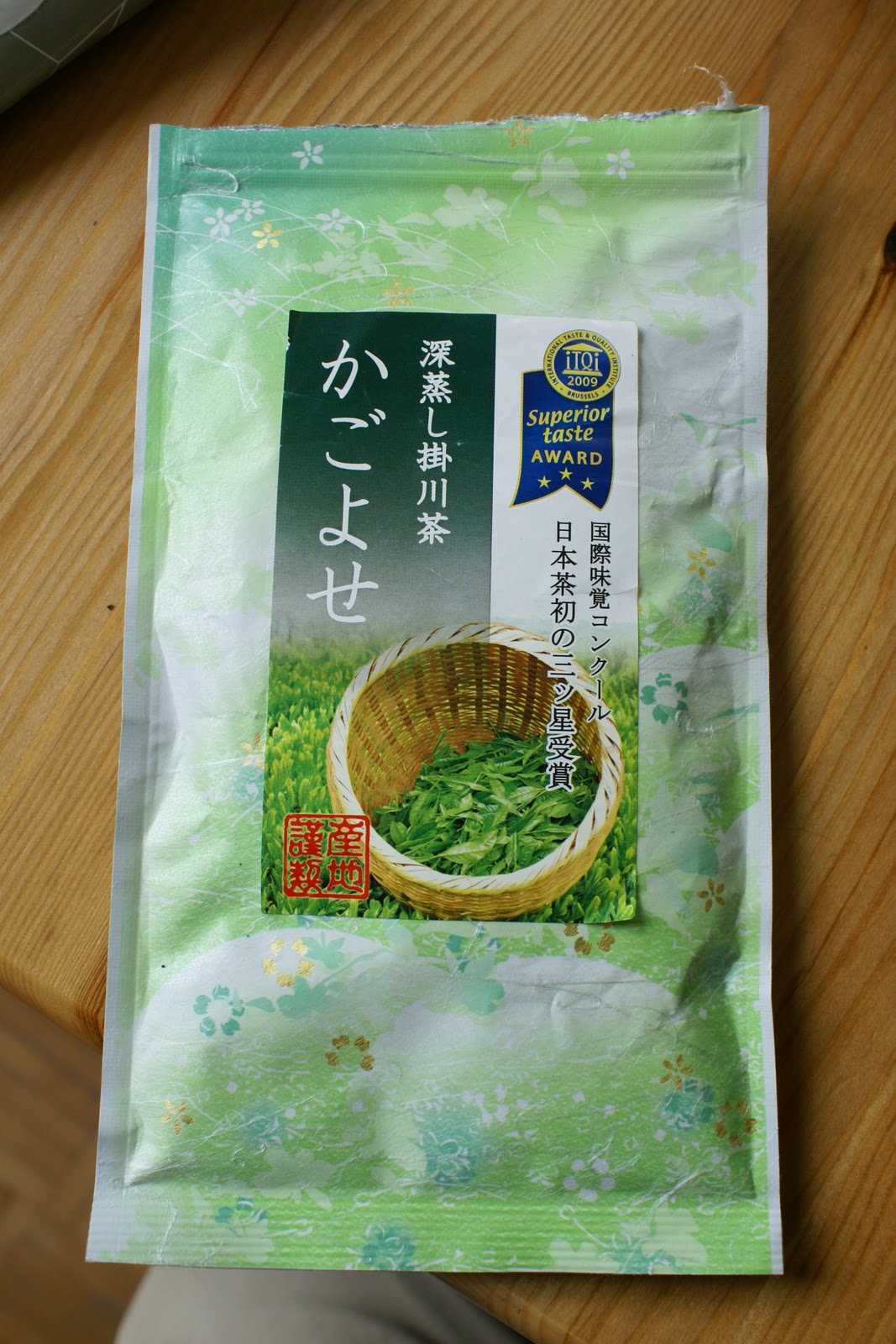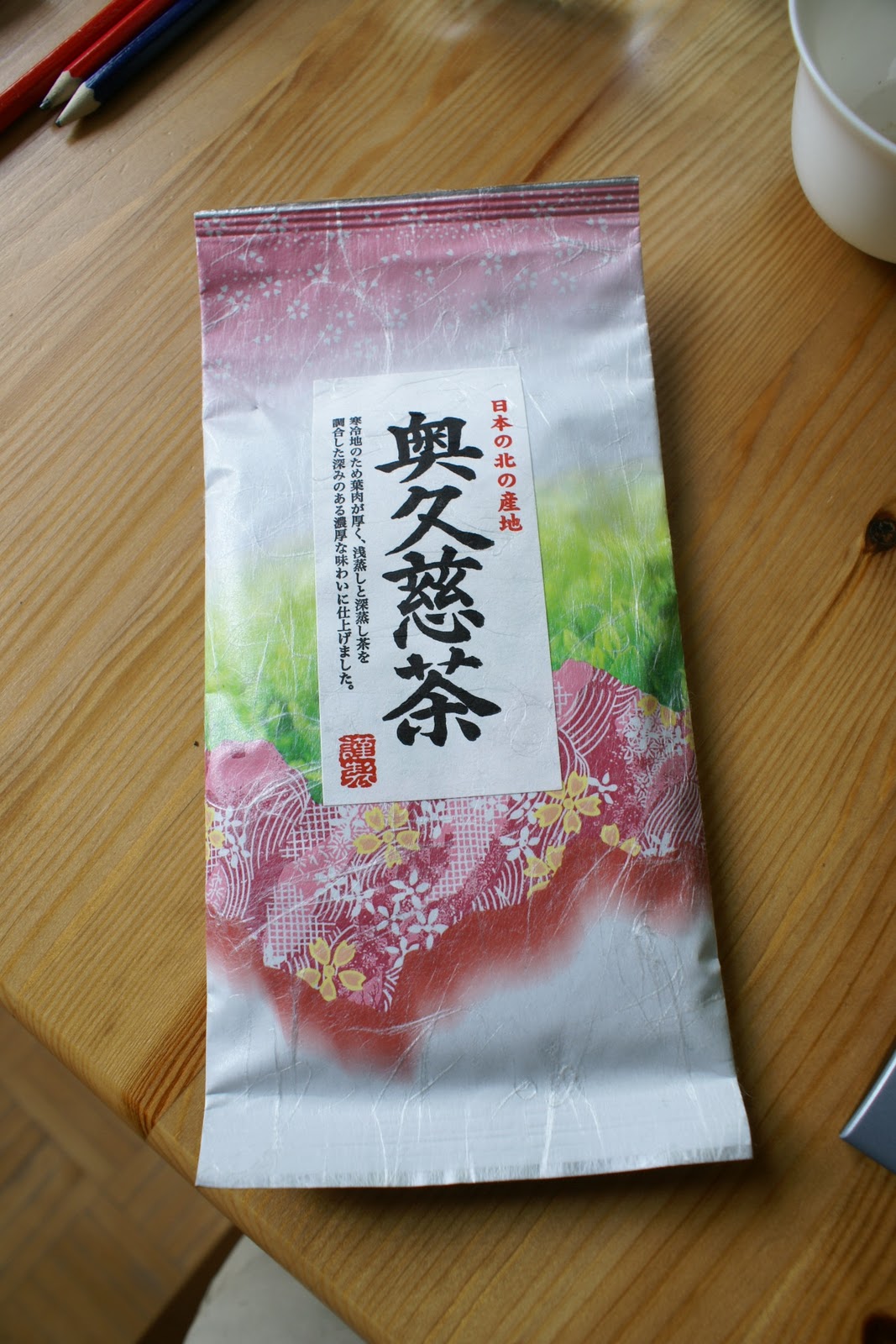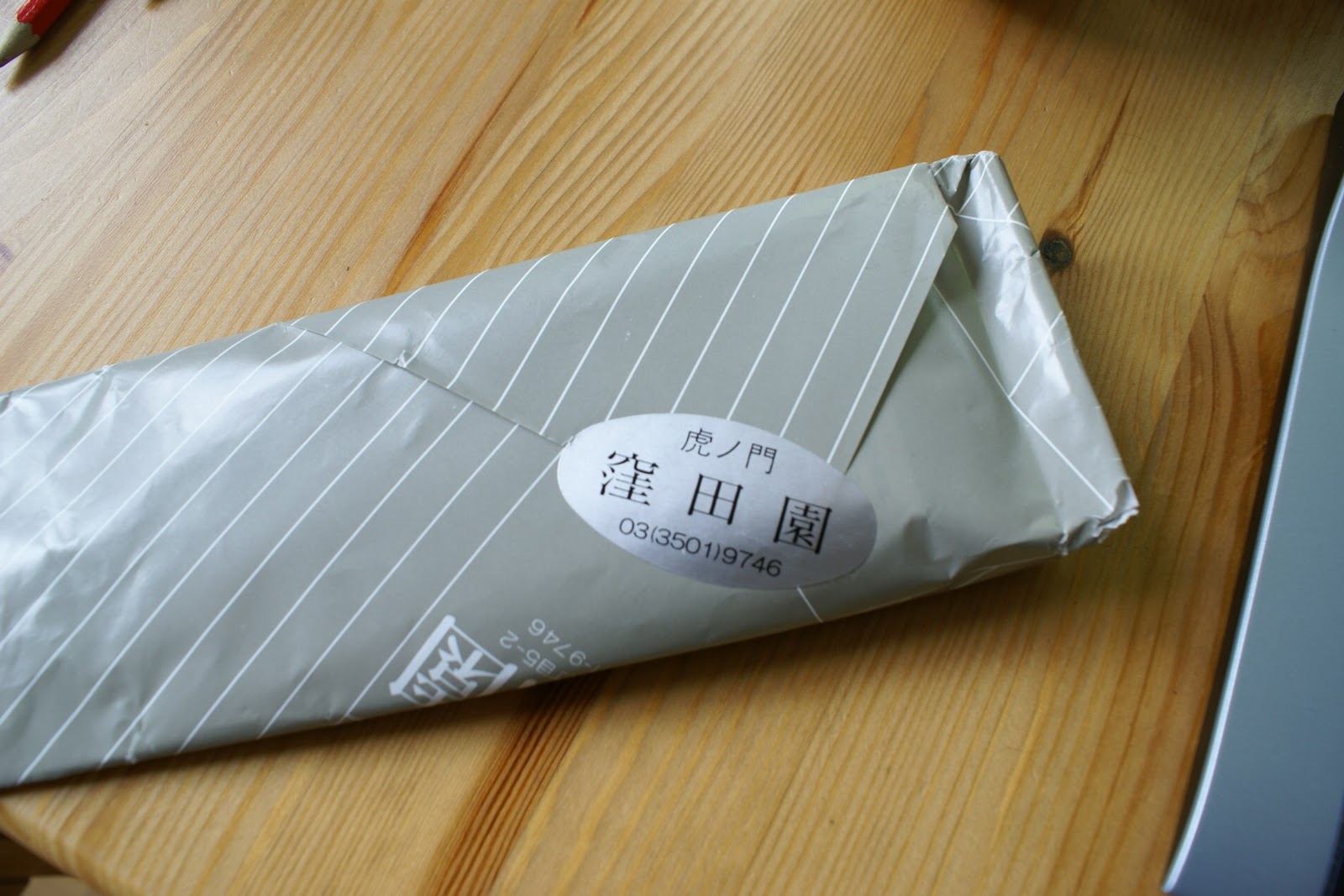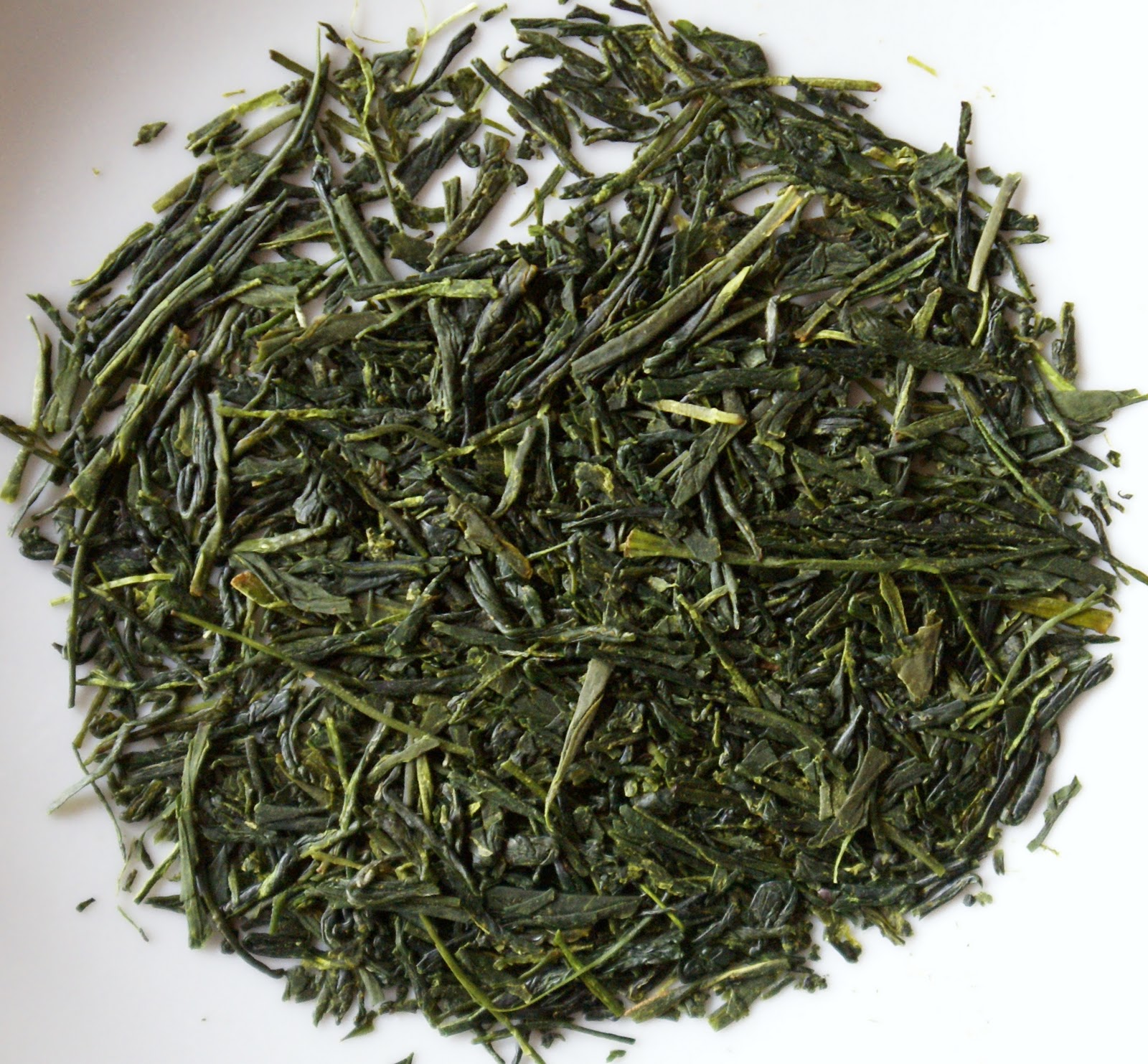A tea from Fumio Maeda
Posted on 7 November 2010
Following the Warsaw tea meeting described here, Polish-Japanese blogger Sayama kindly sent me a parcel of fresh Japanese teas. A nice opportunity to try stuff from renowned merchants hitherto unknown to me: Kaburagien, Kubotaen and Azumaen.
 The Kagoyose from Kaburagien is a fukamushi [long-steamed] sencha offered at the very modic price of ¥700 /100g (photo above). The dry leaves lack lustre and show a proportion of twigs. Brewed very concentrated gyokuro-style (see here for an explanation) with 5g of leaf / 75ml / 60C / 2 minutes this is a solid but ordinary tea, showing good umami and sweetness for balance but a little coarse and green-bitter (more so than you’d expect from the brewing regime). There’s also a dusty, slightly stale edge on the finish that made me think this is actually a 2009 not a 2010. I actually preferred this tea brewed in a more relaxed way, with maybe triple the amount of water and a slightly higher temperature: there’s breadth and some satisfying sweetness, although the stale vegetal edge is still there. Still, for the price it’s a solid, well-construed tea that I’d recommend as long as you can secure a fresh batch.
The Kagoyose from Kaburagien is a fukamushi [long-steamed] sencha offered at the very modic price of ¥700 /100g (photo above). The dry leaves lack lustre and show a proportion of twigs. Brewed very concentrated gyokuro-style (see here for an explanation) with 5g of leaf / 75ml / 60C / 2 minutes this is a solid but ordinary tea, showing good umami and sweetness for balance but a little coarse and green-bitter (more so than you’d expect from the brewing regime). There’s also a dusty, slightly stale edge on the finish that made me think this is actually a 2009 not a 2010. I actually preferred this tea brewed in a more relaxed way, with maybe triple the amount of water and a slightly higher temperature: there’s breadth and some satisfying sweetness, although the stale vegetal edge is still there. Still, for the price it’s a solid, well-construed tea that I’d recommend as long as you can secure a fresh batch. The Okukuji-cha from the Ibaraki prefecture (I’m told it’s a rare tea) is from Azumaen. It’s definitely less steamed and fragmented than the Kagoyose above (the leaf reminds me slightly of a kabusecha – has there been any shading here?). It’s another tea to which I find some weaknesses; it’s best to rub them out with a more forgiving large-pot brewing than a very analytic approach. On the positive side there’s some citrusy liveliness and a pleasant almondy breadth to the brew. Rather easy to overbrew, becoming fairly bitter: slightly odd given its largish leaf. The drawback of the large pot method here is that the second infusion already recedes into a milky blandness.
The Okukuji-cha from the Ibaraki prefecture (I’m told it’s a rare tea) is from Azumaen. It’s definitely less steamed and fragmented than the Kagoyose above (the leaf reminds me slightly of a kabusecha – has there been any shading here?). It’s another tea to which I find some weaknesses; it’s best to rub them out with a more forgiving large-pot brewing than a very analytic approach. On the positive side there’s some citrusy liveliness and a pleasant almondy breadth to the brew. Rather easy to overbrew, becoming fairly bitter: slightly odd given its largish leaf. The drawback of the large pot method here is that the second infusion already recedes into a milky blandness. The third tea is from the Kubotaen shop and is a 2010 sencha blended by teamaster Fumio Maeda (his website – Japanese only – is here). Mr. Maeda is a TV celebrity tea instructor, though I don’t have a lot of background on his activities. Anyhow this tea is in a totally different league to the above two. A fine fukamushi grade, this has an intense umami smell from the dry leaf alone. In a concentrated brewing this tea delivers an exciting intensity of umami and sweet tastes. There are two outstanding things here: the broad texture – this tea seems more ‘filled’ with flavour than the other two, and really tastes quite complete – and the balance: although there’s a lot of power the tea never tastes raw, and there’s always sweetness to balance the savoury and the bitter. Kubotaen apparently having no website I have no idea about the price of this, but it’s definitely recommended.
The third tea is from the Kubotaen shop and is a 2010 sencha blended by teamaster Fumio Maeda (his website – Japanese only – is here). Mr. Maeda is a TV celebrity tea instructor, though I don’t have a lot of background on his activities. Anyhow this tea is in a totally different league to the above two. A fine fukamushi grade, this has an intense umami smell from the dry leaf alone. In a concentrated brewing this tea delivers an exciting intensity of umami and sweet tastes. There are two outstanding things here: the broad texture – this tea seems more ‘filled’ with flavour than the other two, and really tastes quite complete – and the balance: although there’s a lot of power the tea never tastes raw, and there’s always sweetness to balance the savoury and the bitter. Kubotaen apparently having no website I have no idea about the price of this, but it’s definitely recommended.Source of teas: gift from a tea friend.


